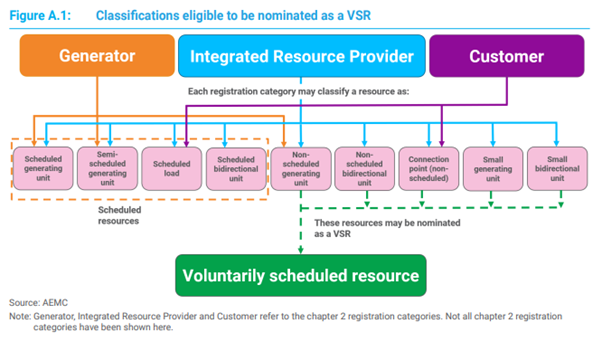On 25 July 2024, the Australian Energy Market Commission (AEMC) issued a draft determination and draft rule (the Draft Rule) which integrates price-responsive resources into the National Electricity Market (NEM). It does so by allowing aggregated distributed energy resources (DER) (also known as community energy resources) to be scheduled and dispatchable.
DER is not currently integrated into the NEM in an effective manner.
Dispatch mode
The Draft Rule integrates DER by introducing a framework called ‘dispatch mode’ which allows currently unscheduled price-responsive resources to be scheduled and dispatched in the NEM, either in aggregate or individually. This will allow virtual power plants, community batteries, flexible large loads and other price-responsive small sources to compete with large-scale generators and storage in the NEM. Accordingly, DER regulated by the Draft Rule will be able to bid into the market, set spot prices, receive dispatch instructions and earn revenue in markets which require scheduling (which are considerably more profitable, like regulation Frequency Control Ancillary Services (FCAS)).
A market participant is eligible to nominate a qualifying resource (in aggregate or individually) as a ‘voluntarily scheduled resource’ (VSR) and participate in central dispatch if:
- the market participant is registered as an IRP, Market Customer or Generator under the NER; and
- the qualifying resource is:
-
- market generating unit that is a non-scheduled generating unit;
- market bidirectional unit that is a non-scheduled bidirectional unit;
- market connection point that is non-scheduled load; or
- one or more small generating units or small bidirectional units (or any combination) at a small resource connection point classified as a market connection point, as pictured below in the figure provided by the AEMC.

Incentive scheme
Notably the draft rule includes a time-limited incentive scheme (first five years) to drive participation, wherein the Australian Energy Market Operator (AEMO) will conduct tenders to pay participants to enter dispatch mode.
Monitoring and reporting
The rule also obliges AEMO to evaluate the impact of DER on AEMO’s short-term demand forecasts. With this data, the Australian Energy Regulator (AER) will assess the cost and efficiency impacts of DER on the NEM.
Key dates
The AEMC has proposed the following implementation schedule:
| Stage | Timing |
| AEMO publishes a high-level impact assessment on the implementation plan for the draft rule. | 1 August 2024 |
| AEMO publishes VSR guidelines. | 31 December 2025 |
| AEMO and the AER publish final reporting guidelines. | 31 December 2025 |
| VSRPs start participating in dispatch. | 5 November 2026 |
| AEMO publishes tender guidelines (Incentive scheme). | 5 November 2026 |
| AEMO commences first tender (Incentive scheme). | January 2027 |
The Hamilton Locke team advises across the energy project life cycle – from project development, grid connection, financing, construction, including the buying and selling of development and operating projects. For more information, please contact Hamilton Locke New Energy Partner Matt Baumgurtel.



